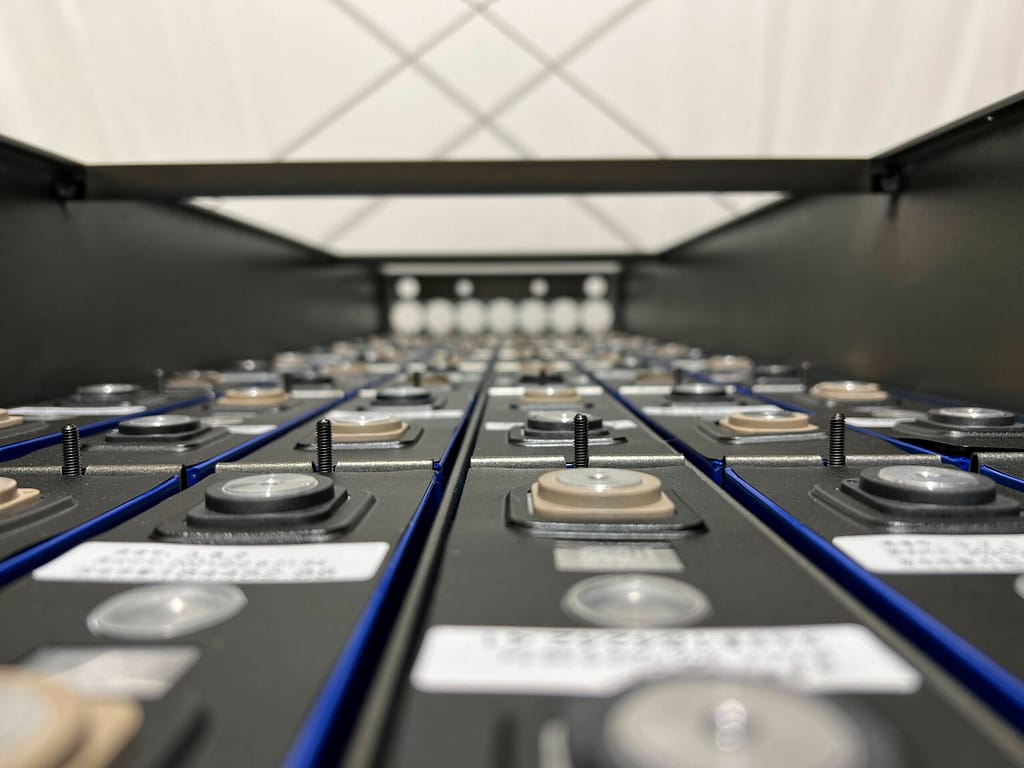Hagal to establish battery centre in Hokksund

Hagal is gearing up to receive tons of retired EV batteries in a new battery centre. With our own pioneering technology, battery cells will be optimised for second life application in stationary energy systems.
By 2030, there will be around 145 million electric vehicles on the planet. During the same period, almost 13 million tons of batteries from electric vehicles will reach the end of the road. Batteries from first generation electric vehicles are about to enter retirement age, increasing the access to used batteries with up to 70 percent residual capacity. With Hagal´s battery management technology, these batteries can get a long and valuable life in stationary energy storage systems.
–Electrification and the transition to green energy will not happen without a power grid that can handle the load. We will need large amounts of batteries to balance consumption and distribution through local energy storage systems, enabling a stable supply of wind and solar power, says Fredrik Ringnes, Hagal’s COO .
Expands the life of batteries
The Norwegian startup has grown from 3 to almost 30 employees in the last year. The company heavily invests in the development of a new technology that optimises the performance of battery cells and prolongs the life of both new and used batteries. To put their technology to work and create more affordable and sustainable battery systems, they are building a ‘Centre of Excellence’ for battery reuse, the LifeCycle Hub™.
Despite innovation and expansion in Norwegian battery production, second life batteries will be pivotal to cover the need for energy storage.
– To meet the global need for locally produced power, we have to add used batteries to the equation. Battery manufacturing has a negative impact on the environment through raw material extraction, chemical waste and emissions in the production process . That is why we have to make sure the batteries are in use for as long as possible, Ringnes explains.
In the recent report from the UN Climate Panel, IPCC, reuse of Lithium-Ion batteries (LIBs) in stationary energy storage is highlighted as an important measure to reduce the demand of LIBs. At the same time, it addresses the challenges of accessing information on the health of batteries to be recycled, which is the exact challenge that Hagal intends to solve with its technology.
A circular battery economy
In Hokksund, Hagal will be receiving used battery cells that are tested and classified before they are assembled in battery modules for stationary energy storage. Hagal´s technology makes sure battery cells with different quality get optimal performance and functionality. That enables both used cells and B-quality cells from battery manufacturing to be used in battery systems. Hagal is now establishing infrastructure to handle batteries at scale in a safe manner.
– We want to help strengthen the circular battery value chain. Making sure each battery cell is used to its last ounce of energy is good news for the environment and economy. It enables more affordable and sustainable solutions, and increased opportunities for companies to invest in the green transition, Ringnes says.
Need for infrastructure
With good access to renewable energy, a strong innovation culture, and focus on automation and robotics, Norway is equipped to build a leading battery economy. There is a new battery strategy in the making, which is likely to include clear requirements for a sustainable value chain – from the first charge to the last.
– We need development of new technology and infrastructure to handle used EV batteries, supported by governmental regulations and grants for green innovation. With this in place, battery reuse can become an attractive industry with globally leading competency, a lot of jobs and a huge value contribution. Hagal will be a player to be reckoned with, Ringnes concludes.
